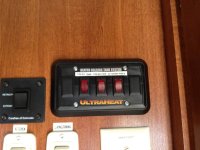SteamboatSailor
Active Member
Hi, all;
We're considering purchasing a 2013 cyclone 4100 that does not have any cold weather packages ( e.g., the Canadian Arctic package, Yeti, etc.)
Living & playing in NW Colorado means lots of cold weather, so we would need to upgrade the insulation & water line/tank protection.
I'm not finding in this forum any reference manuals or commentary on DIY install of heat pads for the tanks. Am I just not looking in the right spot...everything else seems to be covered in this wonderful forum.
Any thoughts/suggestions on what would be involved would be appreciated.
Thx in advance....
We're considering purchasing a 2013 cyclone 4100 that does not have any cold weather packages ( e.g., the Canadian Arctic package, Yeti, etc.)
Living & playing in NW Colorado means lots of cold weather, so we would need to upgrade the insulation & water line/tank protection.
I'm not finding in this forum any reference manuals or commentary on DIY install of heat pads for the tanks. Am I just not looking in the right spot...everything else seems to be covered in this wonderful forum.
Any thoughts/suggestions on what would be involved would be appreciated.
Thx in advance....



